Guide to Seminole Canyon State Park and Historic Site
In the realms of southern Texas, in a region habitated by expanses of desert and gorges of canyons, one small and under-rated state park really stands out! It borrows on all of the unique characteristics of its neighboring parks like Big Bend National Park, but has a flair all its own! Seminole Canyon State Park and Historic Site in inconspicuously tucked into the most remote corner of Texas, concealing some truly amazing outdoor opportunities and rich native history that are begging to be explored!
Disclosure: Below are some affiliate links-these are all products I highly recommend. I won’t make any recommendations on this page that I haven’t tested or personally used!
Table of Contents
Guide to Seminole Canyon State Park and Historic Site
- Location: Comstock, Texas
- Fees: $4 a person over 13 years old (under 13 free)
- Hours: Open daily except Christmas and Thanksgiving
- Reservations: reserve day passes and campsites HERE
- Pets: allowed on trails, not on tours
- Camping: Developed campsites and primitive campsites available
- Hiking: 10 miles of trails – park trail map HERE
- Best Time of Year to Visit: Early Fall – Late Spring
Few state parks in southern Texas pack as much unique scenery, rugged hikes, and ancient history within their borders as Seminole Canyon State Park and Historic Site. This park seamlessly blends together an environment that co-exists between desert and river life, with sprinklings of culture and historical roots that really make this park stand out. This guide covers everything that must be experienced on any trip to Seminole Canyon State Park and Historic Site!
Location of Seminole Canyon
To reach Seminole Canyon, visitors must travel all the way to the southern edge of Texas, to the boundary cut by the Rio Grande between this state and Mexico. Much like Big Bend National Park, this state park also shares in this mesmerizing border, as well as its sense of remoteness and seclusion. The nearest small town is Comstock, with its one gas station. The nearest big town is Del Rio, Texas.
Ways to Explore Seminole Canyon State Park and Historic Site
Before delving into all the ways to experience this state park, let me start by saying this is one of the more secluded and isolated state parks in Texas, which can be a great bonus to those looking to get away from the crowds, get off the grid, and have some more secluded hiking and camping experiences.
At the heart of Seminole Canyon State Park and Historic Site is the mighty Rio Grande River, and Seminole Canyon does a superb job of highlighting this gem in its hiking opportunities. Camping at this state park is likewise as memorable, if you are into quiet, open expanses of desert nights and unfiltered panoramas of dark sky.
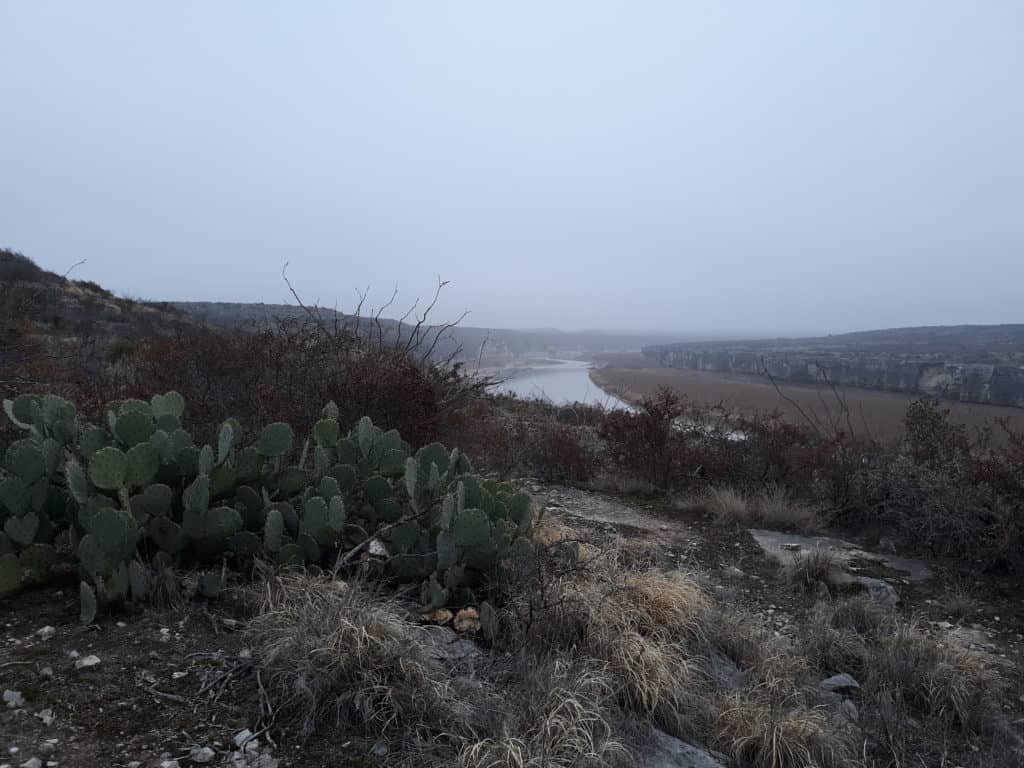
Hiking in Seminole Canyon
The highlight hike of Seminole Canyon is arguably the Canyon Rim Trail, which, as it sounds, weaves along the rim of the Rio Grande River, providing exhilarating views of this monolith, as well as glimpses into the country of Mexico. The stark irony of this desert environment sliced by such a large, powerful river is quite mesmerizing, making the Canyon Rim Trail a must do hike!
The other element that makes this trail unique is the terrain itself. As it coincides so closely with the cliff walls enclosing the Rio Grande River, often the path itself is hiked over large slabs of exposed gray rock beds, adding another unique element to the otherwise desert and shrub laden surroundings.
To access the Canyon Rim Trail, hikers must actually first take the Rio Grande Trail, which connects to the Canyon Rim Trail. Both of these trails together form a 6 mile roundtrip loop trail, when combined. The trailhead for the Rio Grande Trail can be found across from the Desert Vista Camping Area.
The Rio Grande Trail and Canyon Rim Trails are dotted with shelters and panoramic overlooks, the best ones by far being those that overlook the Rio Grande’s canyons. My personal favorite overlook is the Panther Cave Overlook (there is a 9 foot long panther image in this cave). There are also some historical ties, such as the wooden bridge that crosses over rock rings, signifying old “wikiup” structures.
***A side note on Panther Cave: though it is visible from the rim, it is only possible to reach Panther Cave and its rock art by boat, as you will be able to notice by the small wooden dock planted at the mouth of the cave. Panther Cave is actually managed by the National Park Service and the Amistad National Recreation Area. It is accessible to boaters, accept when water levels are too low.
Canyon Rim Trail Recap:
- Length: 4.9 miles roundtrip
- Rating: Moderate – some small inclines, with sections of rougher terrain and loose rock
- Highlights: the Rio Grande River and canyon, the Panther Cave and Presa Canyon Overlooks
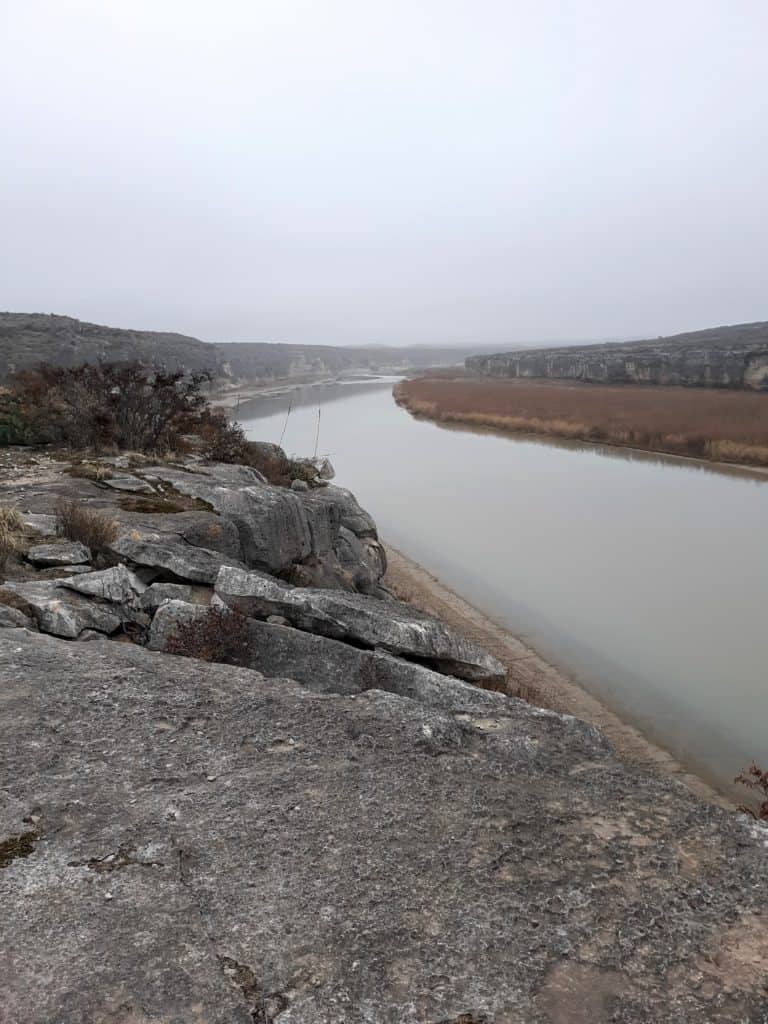
If you are hiking in the area of the Rio Grande Trail and Canyon Rim Trails, you will likely encounter the Middle Fork Trail, which is basically a 1 mile connector trail between Rio Grande Trail and the Presa Overlook Trail.
Middle Fork Trail Recap:
- Length: 1 mile
- Rating: Moderate
- Highlights: Sweeping expanses of desert scenery
The Presa Overlook Trail connects between the Canyon Rim Trail and the Middle Fork Trail. It is a way to shorten the Canyon Rim Trail if you did not wish to hike its entirety.
Presa Overlook Trail Recap:
- Length: 0.56 miles roundtrip
- Rating: Moderate
- Highlights: Presa Canyon Overlook
As mentioned before, the Rio Grande Trail is the somewhat of the “entrance” to all the trails in the back part of the park, including the Canyon Rim Trail, Presa Overlook Trail, and Middle Fork Trail. The trailhead for the Rio Grande Trail is adjacent to the Desert Vista Camping Area and Roadrunner Flat Primitive Camping Areas. There is parking available at the trailhead. The Rio Grande Trail is just over 2 miles in length, but it branches off to connect to the Canyon Rim Trail and the Middle Fork Trail.
Rio Grande Trail Recap:
- Length: 2.3 miles
- Rating: Moderate
- Highlights: access to the canyon rim and Presa overlook
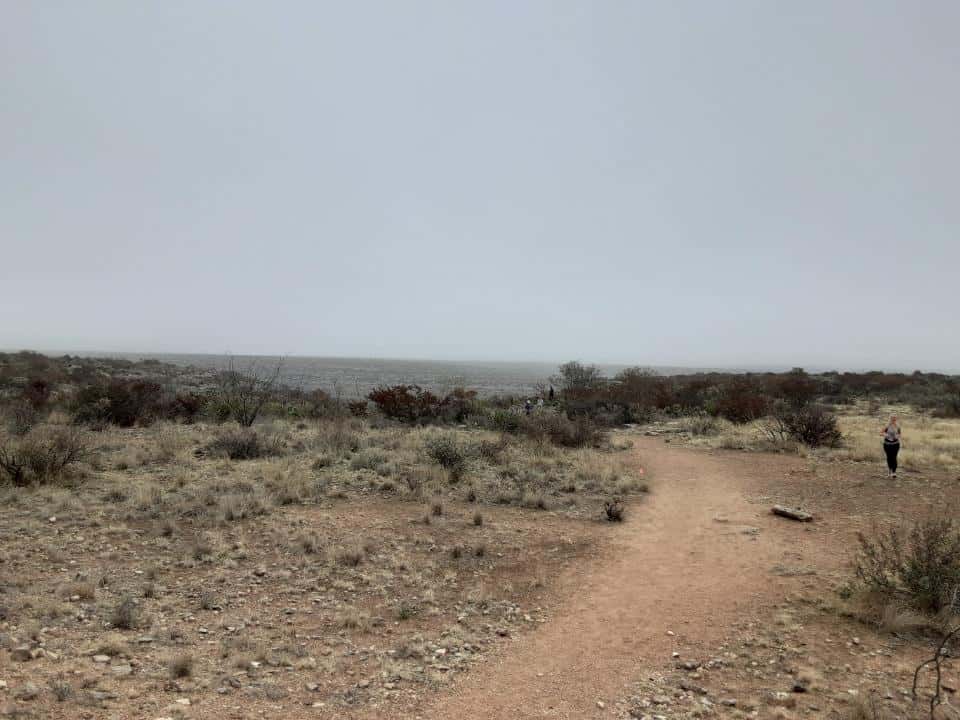
If you are looking for a shorter, family friendly nature hike in the park, there are two options near the entrance. The Windmill Nature Trail is just under a half mile, and the Birding Trail is just one tenth of a mile in length and ADA accessible. These trails will not have the same Rio Grande views as some of the others, but they are an excellent chance to experience a glimpse of desert ecosystems and learn about the wildlife and fauna found at Seminole Canyon.
Windmill Nature Trail Recap:
- Length: 0.45 miles roundtrip
- Rating: easy
- Highlights: wooden windmill structure and Maker of Peace sculpture
Birding Trail Recap:
- Length: 0.1 miles
- Rating: easy with a packed surface trail (ADA accessible)
- Highlights: a bird viewing area
A good way to “visualize” the trails in Seminole Canyon State Park and Historic Site is to somewhat “clump” them into two parts: the nature trails near the entrance, and the backcountry trails that all connect to each other.
The Windmill Nature Trail and the Birding Trail are the two nature trails in the park, and are stand alone trails near the entrance. The Rio Grande Trail, Presa Overlook Trail, Middle Fork Trail, and Canyon Rim Trails are all in the back of the park, and all have ways of connecting to each other. The main trail to access them all is the Rio Grande Trail, which leads into these trails from the camping areas.
Camping in Seminole Canyon
There are 46 campsites at Seminole Canyon State Park and Historic Site, ranging from primitive walk in sites, to established sites with electric and water. The established sites with electric and water can be found in the Desert Vista Camping Area. There are 15 drive up primitive sites in the Roadrunner Flat Primitive Camping Area. Sites are reservable online.
***No backcountry camping is permitted at Seminole Canyon.
Other Outdoor Opportunities in Seminole Canyon State Park
Usually hiking and camping are the top draws of many state parks, but in Seminole Canyon State Park and Historic Site, the cultural and historical ties offer an equally appealing and memorable opportunity. Scattered across this desert landscape are the remnants of a time past, witnessed by pictographs and cave art adorning the canyon walls. It is possible to see these pictographs and ancient rock art up close and in person through special ranger led tours in Seminole Canyon.
**Though special guided events are held occasionally (check the state park website for these special events), there are 3 main regularly scheduled ranger tours that are offered at Seminole Canyon.
- The Fate Bell Shelter Tour: this guided tour takes visitors to a large cliff overhang, which shelters some spectacular examples of early rock art. This tour is offered on Sunday, Wednesday, Thursday, Friday, and Saturday weekly. The cost is $8 for adults, and $5 for children.
- The Presa Day Hike Tour: this guided hike is a more rugged, day long hiking tour to some of the more remote backcountry areas of Seminole Canyon and its resident Presa Canyon. The payoff is the chance to witness more rare rock art sites. Cost is $25 a person, and this event is offered in the spring and fall. Prior arrangements with the park are necessary.
- The Upper Canyon Hike: this guided hike explores the higher areas of the canyon, as well as its rock art. This half day hike is offered in the spring and fall for $12 a person. Prior arrangements with the park are necessary.
***As these are ranger led tours, make sure to contact the park prior and/or make prior arrangements as necessary to secure a spot on these tours.
- Panther Cave Pictograph Site: if you hike the Canyon Rim Trail, you will be able to see the Panther Cave Pictograph Site from the overlook, hewn into a cave, on the other side of the Rio Grande River, though you cannot directly access the cave from Seminole Canyon State Park.
- Mountain biking is also popular at Seminole Canyon’s ten miles of trails, for those looking to add this other form of active travel to their itinerary.
- Wildlife and nature viewing are also popular at Seminole Canyon State Park and Historic Site. Native wildlife includes deer, armadillos, foxes, bobcats, javelina, and the occasional black bear or mountain lion. Seminole Canyon is also a great place to witness the forces of nature, from its wind and water carved cliffs, caves, and canyons. And of course, you can’t forget about the chance to witness early rock art in a landscape that has remained true to its roots.

Know Before You Go
There are a few helpful hints to getting the most out of your visit to Seminole Canyon State Park and Historic Site.
- Entrance fees to Seminole Canyon State Park and Historic Site are $4 a person, with children under 13 years old free.
- The park is open daily, except for Christmas and Thanksgiving.
- The small town of Comstock is barely a dot on the map, and has one gas station. For all other necessities, it is best to fill up in another larger town, such as Del Rio, 45 minutes drive to the east.
- Cell service is close to non-existent in the park, with a few small patches of sketchy service at best.
Gear Recs for Seminole Canyon
Three big items I would come prepared for at Seminole Canyon State Park and Historic Site are footwear, fabrics, and water!
- the right footwear! There aren’t any monstrous inclines here, but the terrain can be rough, uneven, and rocky, with portions of loose rock and jagged trail. A good, cushioned, supportive, and grippy trail running shoe or low ankle hiking boot is best in this environment. I opted for using my HOKA Speedgoat trail runners when I hiked and trail ran in Seminole Canyon. You can’t beat the cushion, which was perfect for the rocky terrain.
- the right fabrics! Especially in the brutal heat of the summer, but true for all seasons, you are going to want to wear the right fabrics, which for me, means wearing wool. Why do I prefer wool? Because it contains all the characteristics of superb hiking fabrics, including breathability, quick drying, and moisture-wicking. These are some of my favorite wool items in my hiking inventory!
*The best cushioned wool hiking socks
*My go to wool long sleeve base layer
- water is the other biggie! After all, it is the desert at Seminole Canyon! Come prepared with several liters if you plan to tackle some of the longer trails. I like using my 3 liter Platypus hydration bladder, because it is perfect for on the go, convenient hydration. Also the wide lip on this model is easy to clean and dry! I pair it with my Camelbak Helena day pack, which carries my hydration bladder and all the other day hiking essentials I need for the day!
***Continue your explorations across Texas! Here are a few of my other favorite outdoor and active travel destinations in the Lone Star State!
PIN for LATER!

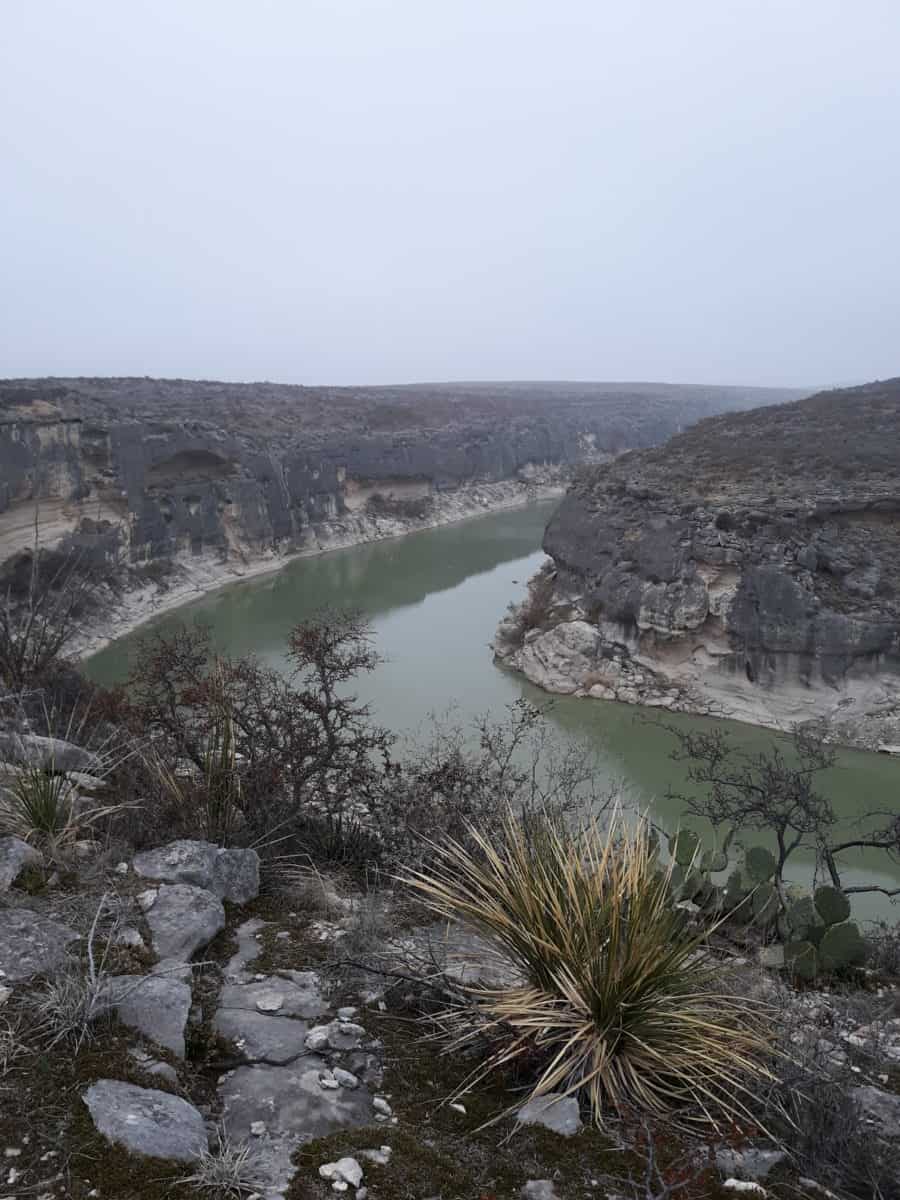
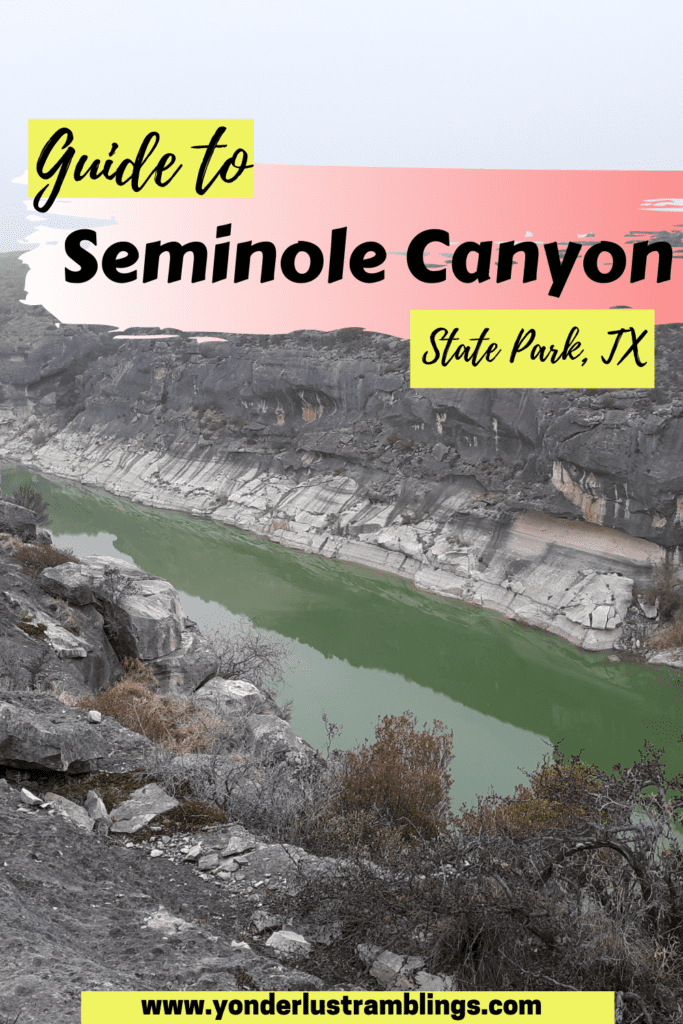

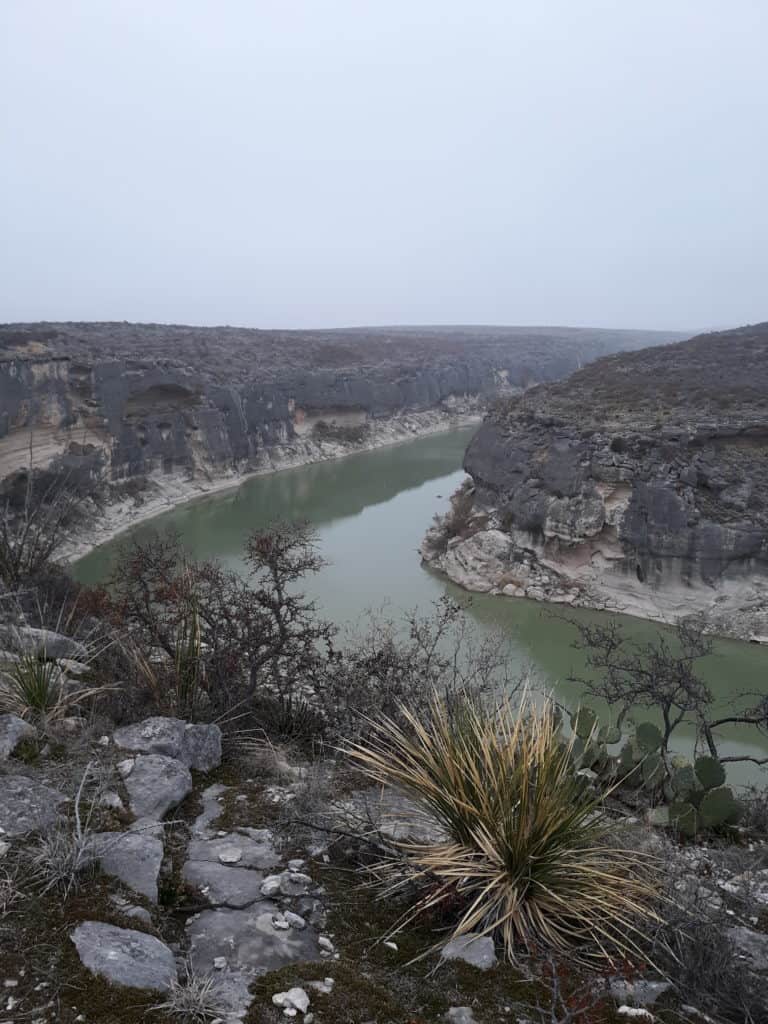
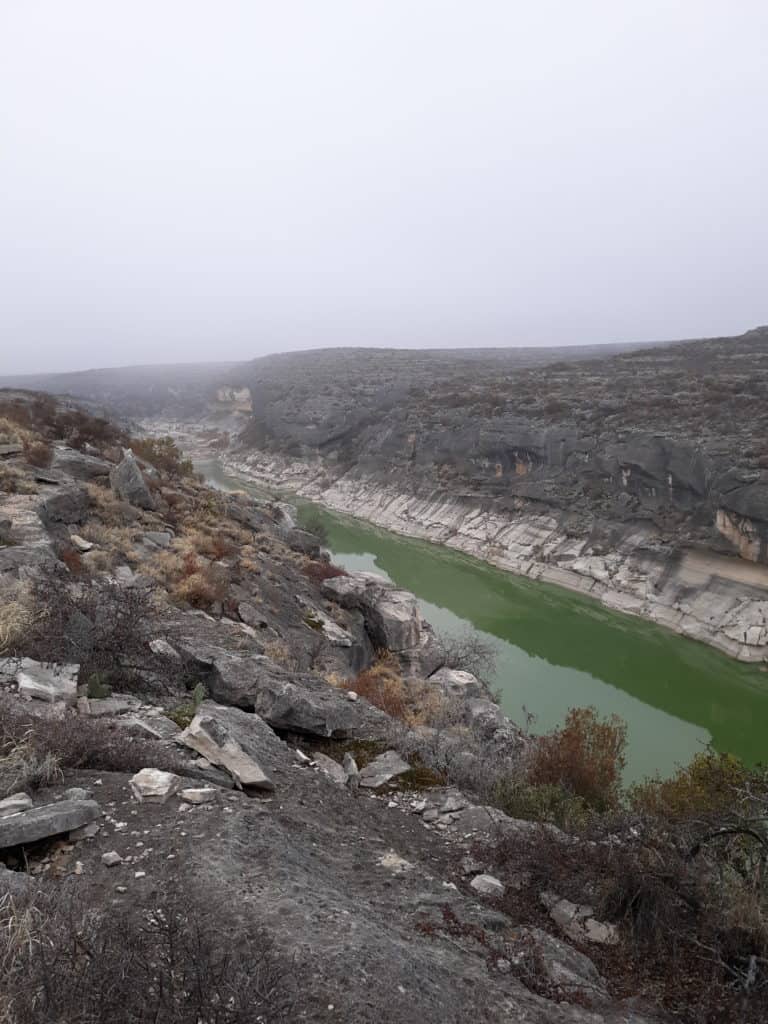
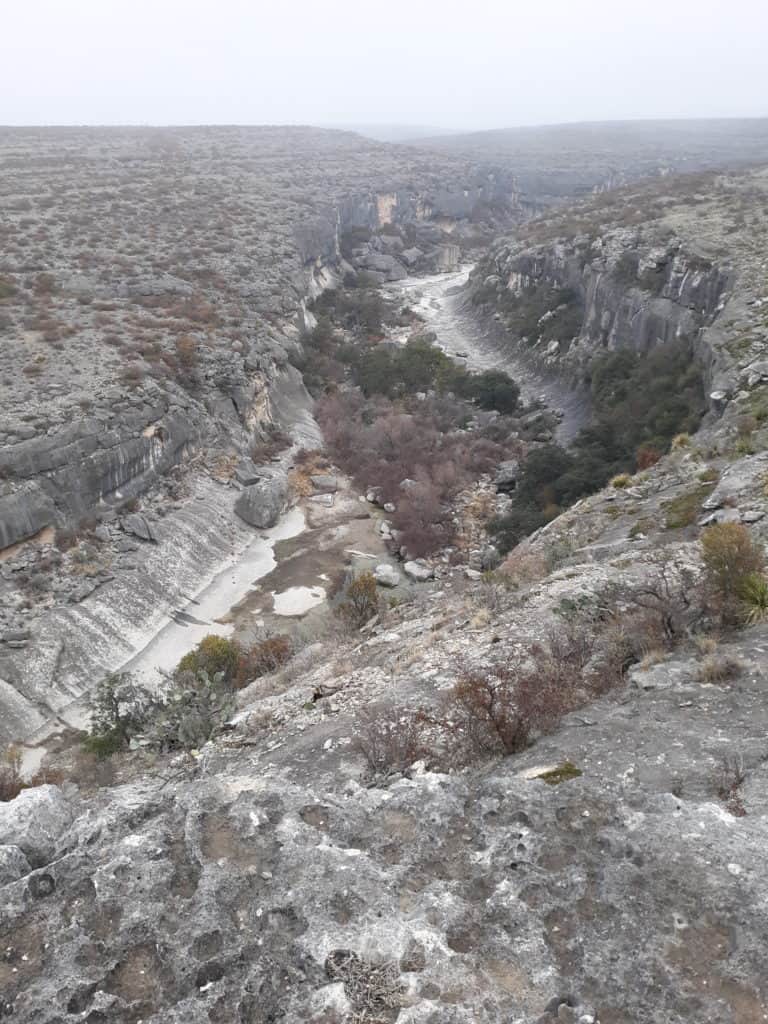
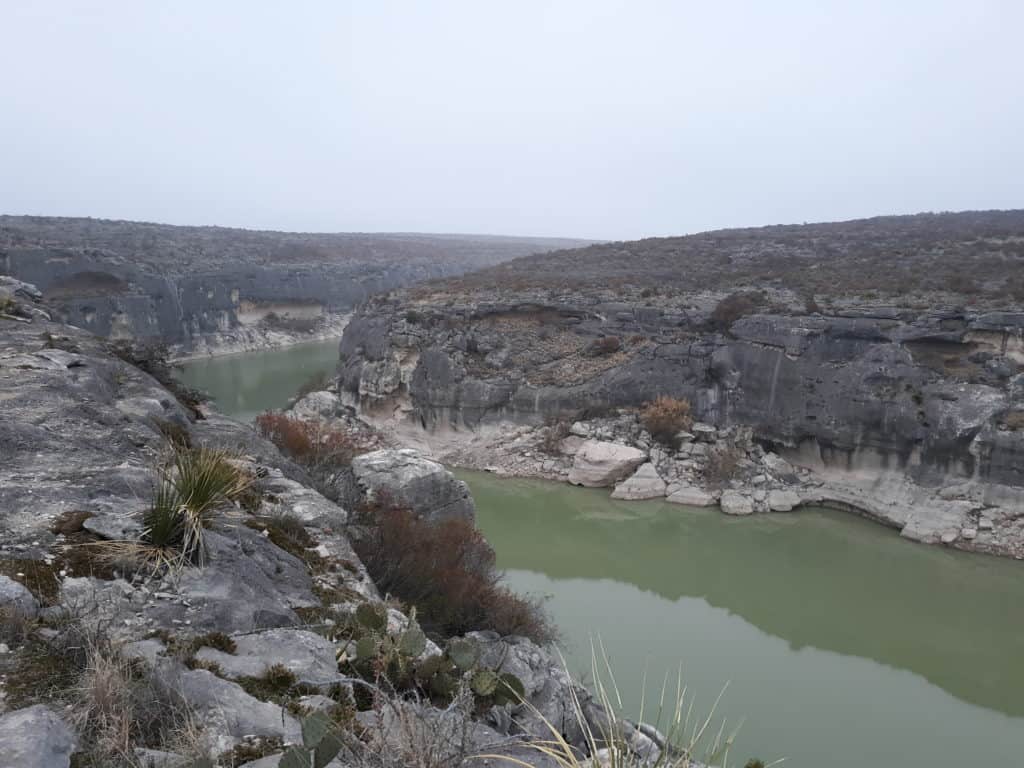
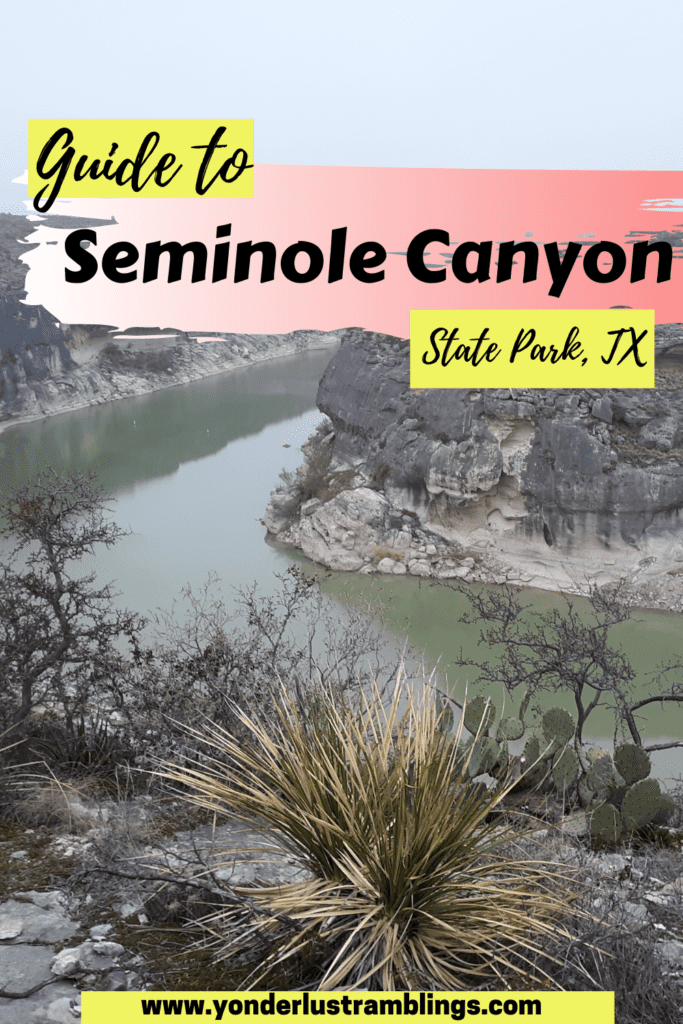
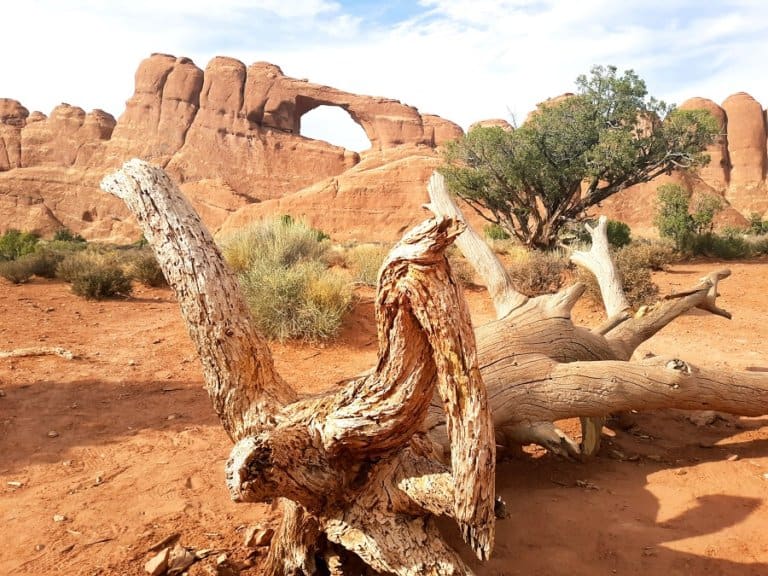
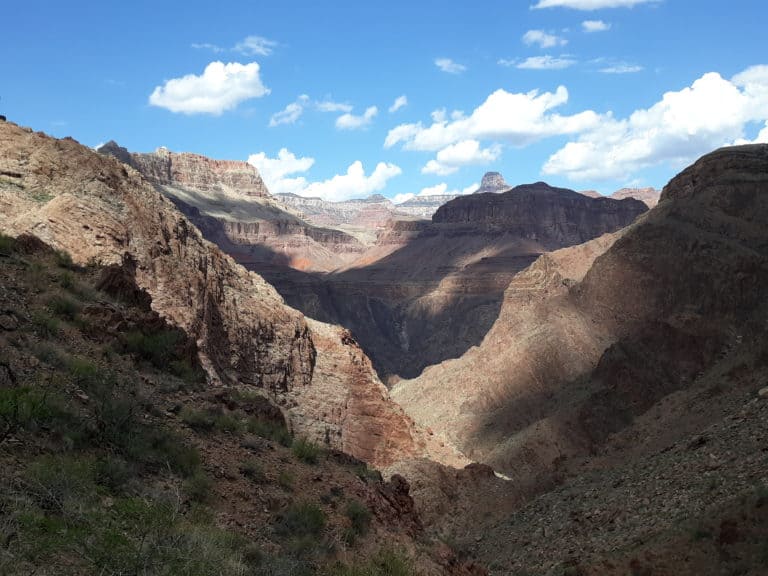
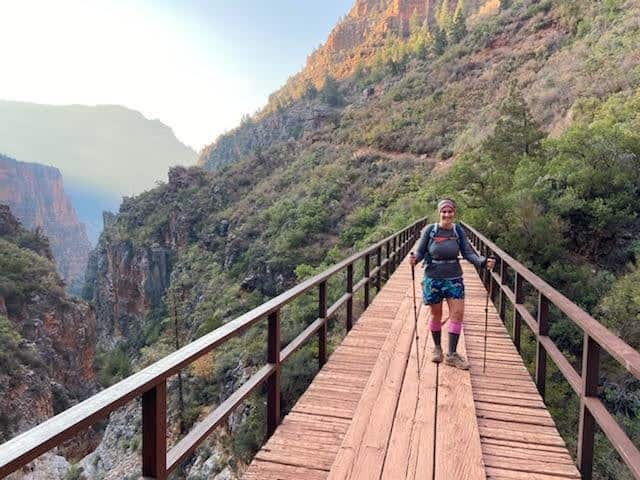
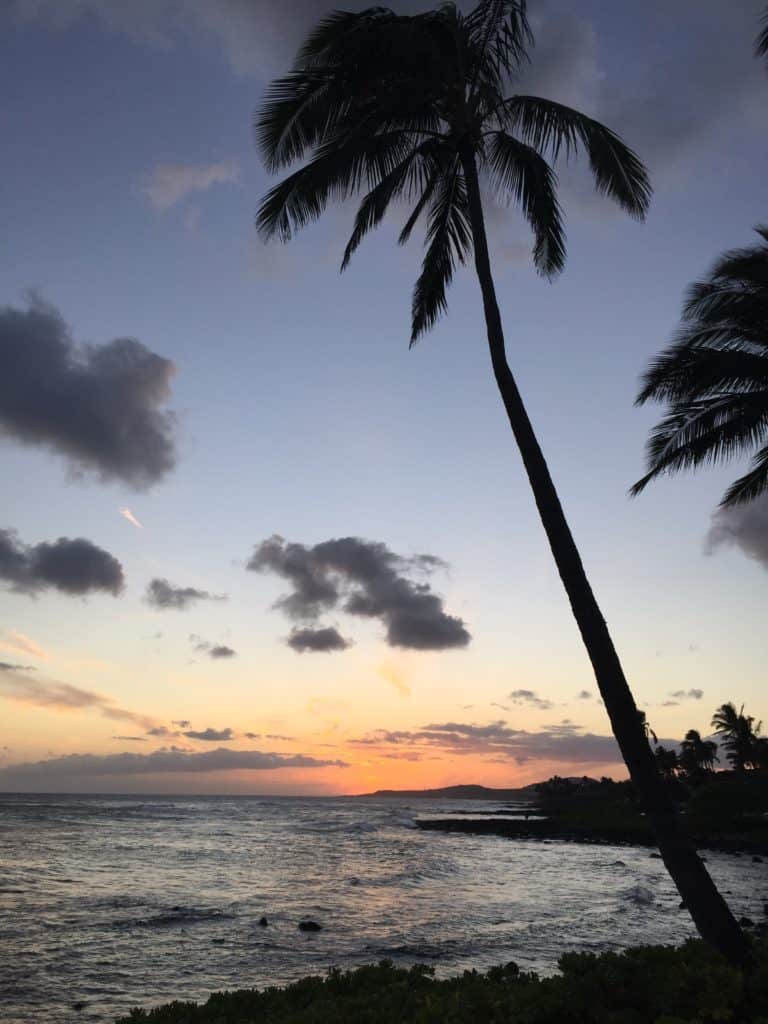
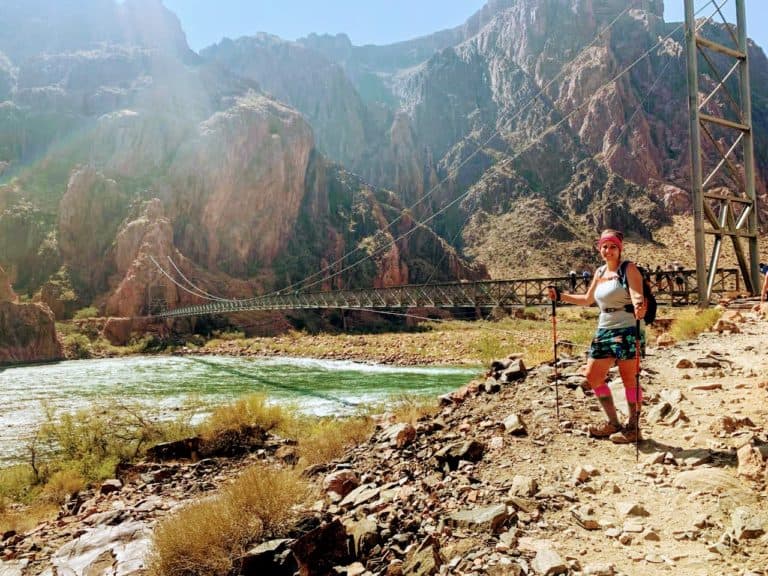

My son and I did this hike in January over MLK Day weekend. It was his 1st glimpse of the US-Mexico border and he loved seeing the canyon. We also did the guided Fate Bell pictograph tour and were amazed at the history of the ancient peoples. Camping wasn’t allowed at the time we went but we found some excellent RV parks along the way. I can recommend them to you via email if you are interested. Go before it gets hot!
Glad to hear you enjoyed this park Michael! I think it is great that you introduced this place to your son, because it has views and history together!